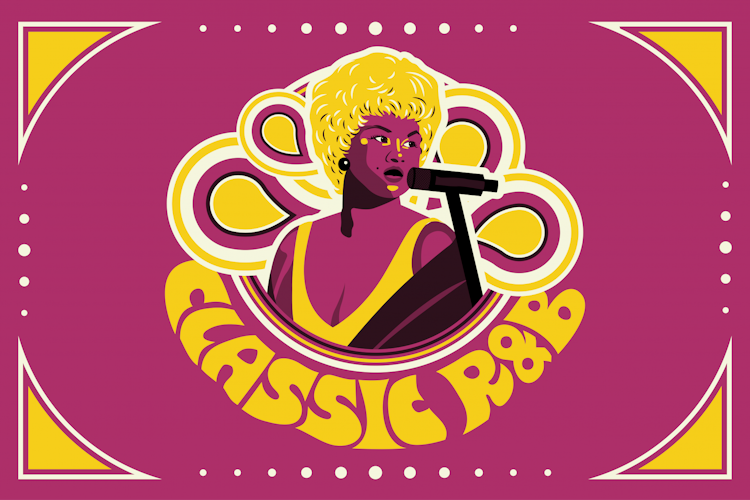First Featured Show
We are excited to announced that our first Featured Show will be Classic R&B, which School of Rock locations from all over the WORLD will be participating in! Rhythm and Blues music was foundational to the evolution of rock and roll, therefore it is one of the most educational shows that School of Rock offers.
Classic R&B listening week
Get your R&B on in our R&B listening room! From Monday, August 26th to Saturday, August 31st, we will have an area set up for students to dive into the world of Classic R&B during open hours. While exploring the Classic R&B show setlist, students will be able to participate in an audio scavenger hunt to earn raffle tickets by answering questions about the songs. Prizes include a $50 Chipotle gift card, or a School of Rock swag bag!
Show Description
Rhythm and Blues music was foundational to the evolution of rock and roll! Originating with jazz and blues in the 1940s, R&B music was predominantly created by black musicians for black audiences until the 1950s, when artists such as Etta James, Little Richard, Fats Domino, and Ike & Tina Turner began to achieve crossover success with white audiences as well. By the early 1960s, record labels like Motown and Stax were churning out legendary hits by Stevie Wonder, Gladys Knight, The Supremes, and Otis Redding, which influenced virtually all of the Rock and Roll and Pop music that came after. The Classic R&B show features groove-oriented music with dynamic arrangements and standout vocal performances. Students participating in this show will have an opportunity to hone their rhythmic skills and broaden their repertoire of music styles by focusing on the music that inspired artists such as The Beatles, The Rolling Stones, and The Who, and which continues to be relevant today with its influence on modern Pop stars such as Adele and John Legend.
R&B's impact on music evolution
R&B, an abbreviation of “Rhythm and Blues,” is a term used to describe the blues-influenced form of music that has been predominantly performed by African-Americans since the late 1930s. The term “Rhythm and Blues” was first introduced by Jerry Wexler in 1949, at a time when he was a reporter for Billboard magazine. It’s said that he coined the term to be a far more palatable description for the upbeat bluesy and jazz-influenced pop music being produced by African-American artists of the time.
Prior to this new designation, the generalized umbrella term used at the time to reference most music produced by Black artists was “race music.” As you can imagine, this term was considered offensive by many people in the music industry, and Billboard wisely decided to begin using the far more marketing-friendly nomenclature of “Rhythm and Blues” that Wexler had created.
Some prominent R&B record labels of the time included Imperial Records and King, which launched the careers of Fats Domino and James Brown respectively. Another label of great renown was Vee-Jay Records, founded in 1953 by the husband and wife team of Vivian Carter and James C Bracken. At one point it held the title of being the largest Black-owned record label - until the powerhouse known as Motown took that title
Due to its predominantly higher energy, fast tempo arrangements, early on Rhythm and Blues music was associated with Black youth and the after-hours clubs they frequented. However, by the 1970s, the term R&B expanded to become a blanket term that also included the closely related Soul and Funk genres. Eventually, the term came to be used to loosely describe most non Hip-Hop African-American urban music, even though Soul and Funk could definitely be placed in categories of their own and explored in depth as such.



